Scandinavian-Style Cured Salmon “Gravlax”
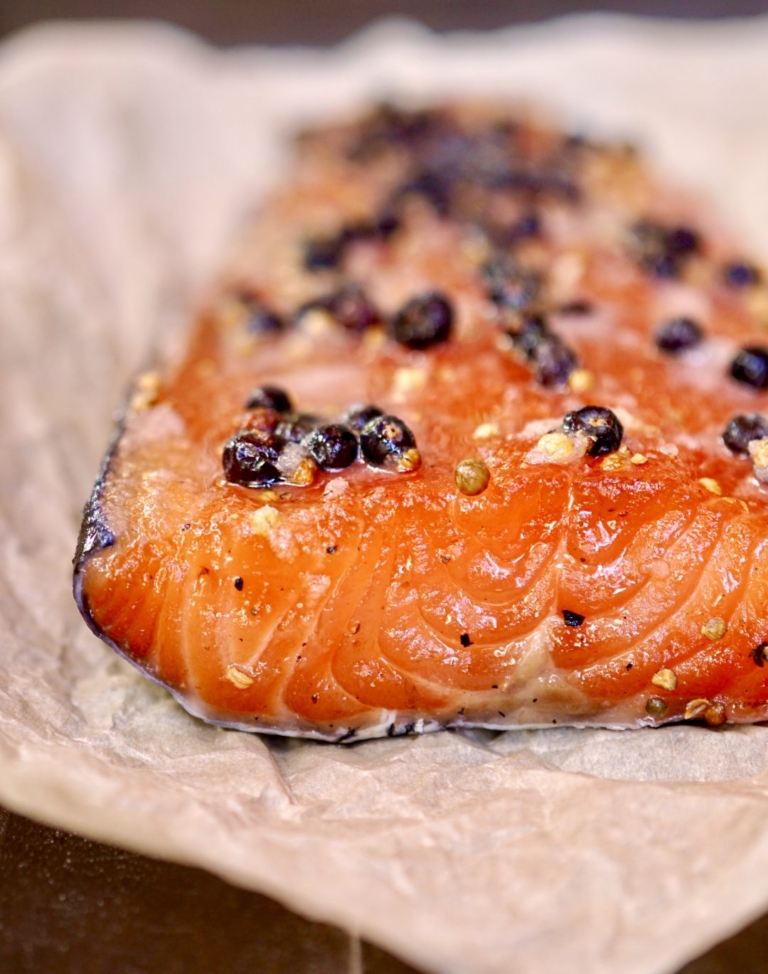
A Special Note
With COVID-19 slowly closing in on my Northern California area, I’ve been too distracted to write or post these days. But today, with my boys home from school, the reality of this pandemic is truly settling in. Cancelations of life events make me feel like a giant “pause” button has been pressed on our lives. Consequently, we are now forced to accept and adjust to this unusual and disturbing new reality. I’ve always read people never fully process a crisis or disaster until it affects their daily lives. But once it does, your eyes open wide. My eyes are now fully open.
I have a deep concern, sympathy, and compassion for anyone frightened and or suffering right now, it is heartbreaking to even read about. To help myself cope, I have decided I would try and keep posting, at least when life allows. My goal here is to help distract myself (and possibly others) from the panic swirling around us as this global crisis unfolds rapidly. This Scandinavian-style cured salmon recipe seemed like an appropriate one as it stemmed from a trip to Denmark I took with my family almost a year ago. Unable to travel now, I look back on that trip longingly. Truthfully, I find cooking and baking to be a calming activity, and I need more calm right now. I hope that people embrace home cooking a bit more in the coming weeks, as we continue to bunker down and practice more “social distancing“.
Gravlax (or cured salmon) is perhaps one of the most famous Scandinavian dishes there is. Although many know of its popularity, very few know its ancient, Arctic history. Food historians can trace gravlax as far back as the 14th century. During the Middle Ages, salt was an expensive commodity and not commonly used to preserve food. In North Sweden, peasants developed an unusual technique called “gravad lax”, which simply meant “buried salmon”.
The gravad lax method requires a simple assortment of spices and herbs and a filleted salmon. Once prepared, the seasoned raw fish was placed in a hole in the ground, covered with bark, and buried, often on the beach, in sand just above the high tide level. This resulted in a flavorful cured salmon more similar to fermented herring than to what gravlax has come to mean today.
But over time, the gravad lax method technique evolved into a more traditional gravlax-making method, with the introduction of salt and dill, among other things. This led to the development of the much milder cured salmon dish we are familiar with today. In my recipe, after 72 hours of curing, the gravlax is safe for consumption. Considered an iconic Scandinavian recipe, this curing method isn’t reserved solely for salmon and is used to cure everything from trout in Norway to sharks in Iceland.
Juniper berries are the primary spice in this simple Scandinavian-style gravlax recipe. Used for culinary and medicinal purposes since ancient times, juniper berries have a unique flavor profile that is both distinct and ideal for curing fish. But Juniper berries, unlike most other types of berries, have a lasting impressive flavor and are therefore only needed in small amounts. With an aroma described best as woody with a slightly spicy, pine-like taste, juniper berries bring a subtle, flavorful taste to the gravlax that I love.
This recipe for Scandinavian-style cured salmon was inspired by my trip to Copenhagen where cured fish was a staple from fine dining to food trucks. This particular dish has become a true favorite of my younger son. I now make it often and serve it just like he had it in Denmark; thinly sliced, in a small mason jar with diced cucumbers, sea salt, and a drizzle of olive oil.
Scandinavian-Style Cured Salmon "Gravlax"
Ingredients:
- One (1 1/2-pound) fillet of Fresh Atlantic salmon with the skin on
- 2 teaspoons whole black peppercorns
- 1 tablespoon whole coriander seeds
- 1 1/2 ounces Juniper berries
- 3/4 cup kosher salt
- 3/4 cup sugar
Directions:
- Using a mortar and pestle, lightly crush the black peppercorns and coriander seeds and place in a small bowl. Do the same for the juniper berries and add to the bowl. Add the salt and sugar and mix well.
- Line a ceramic baking dish with plastic wrap, allowing for some overhang, and place near your work station. Rinse the salmon and pat dry with a paper towel. Place the salmon on the plastic wrap in the baking dish. Using your hands, spread the salt mixture evenly over the salmon filet, making sure to cover the entire filet. Wrap the salmon very tightly in the plastic wrap making sure the seasoning stays on place. Place a second layer of plastic wrap to help seal the salmon tightly and place in the baking dish. Next, refrigerate the wrapped salmon and allow to to cure for 3 days. Note: Be sure to turn the salmon daily while curing.
- When the salmon is cured, lightly rinse off the cure mixture with cold water and pat dry. To serve, use a slicing knife to thinly slice the salmon. Serve on crackers or bagels as desired.

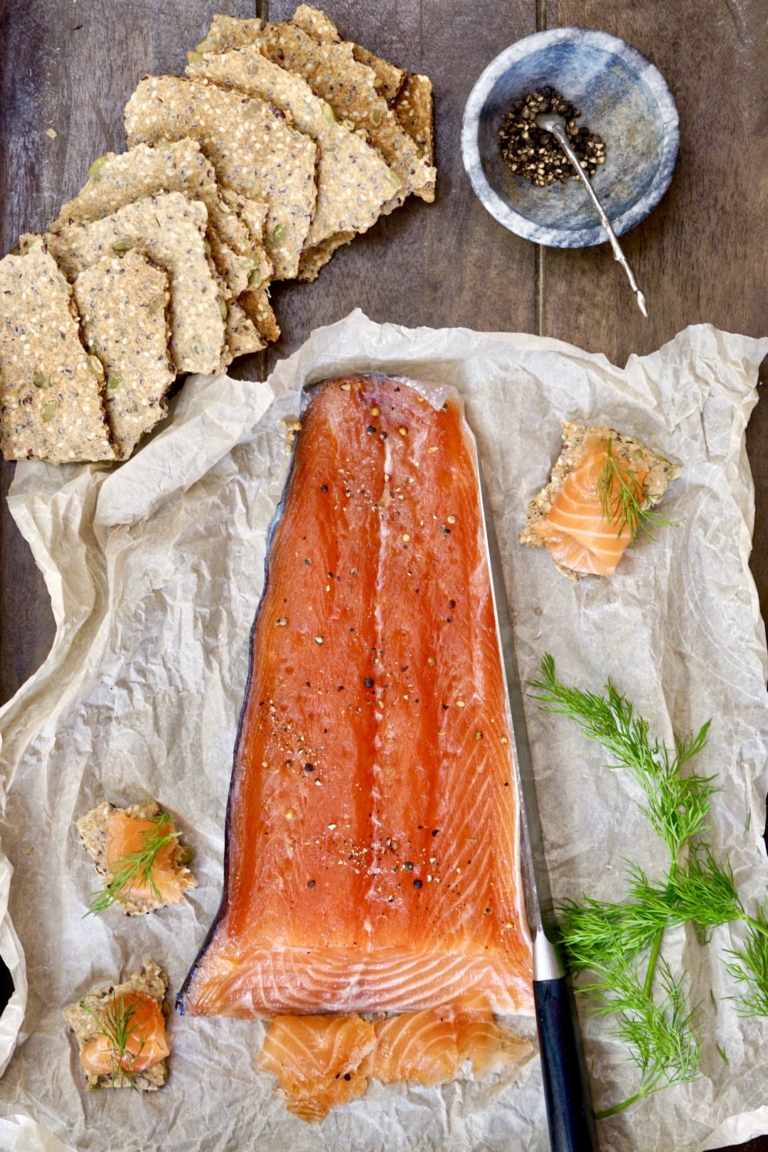
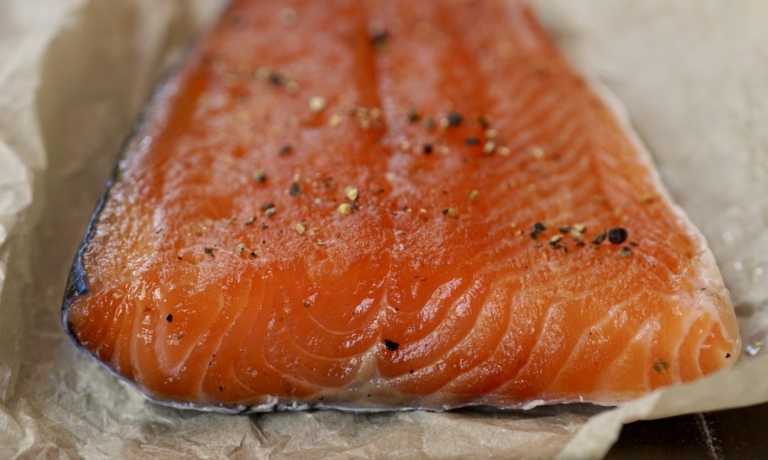
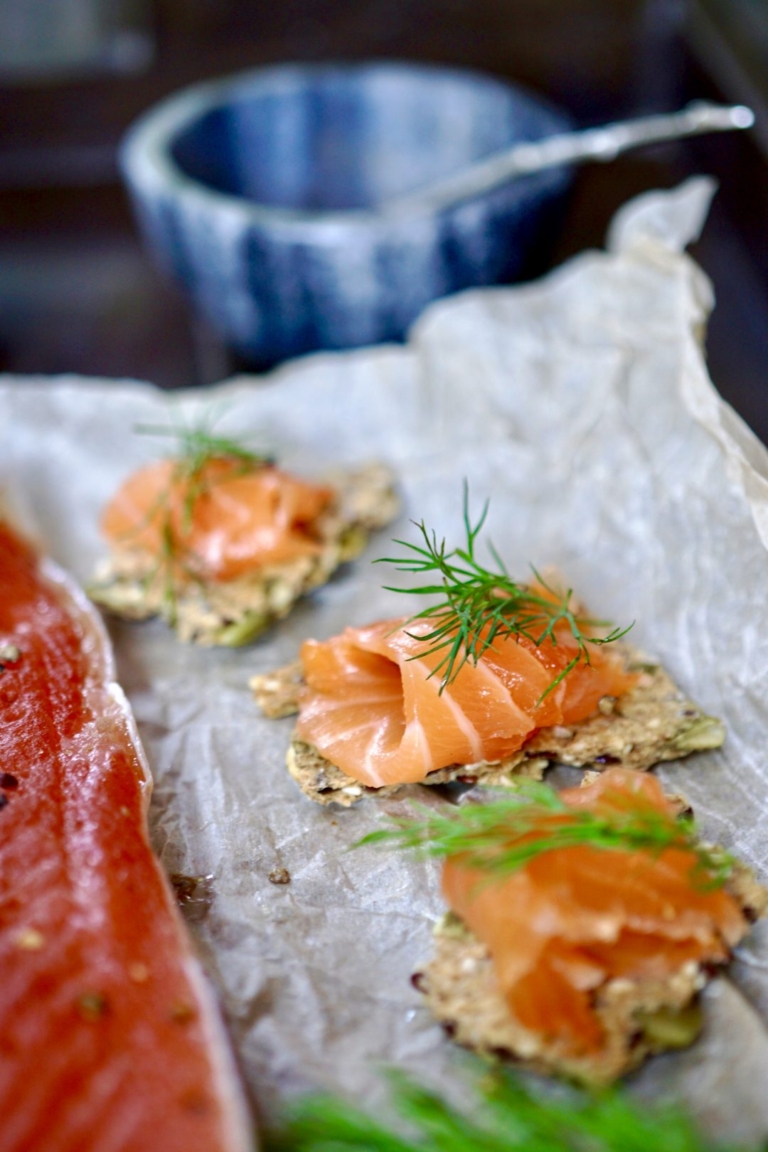
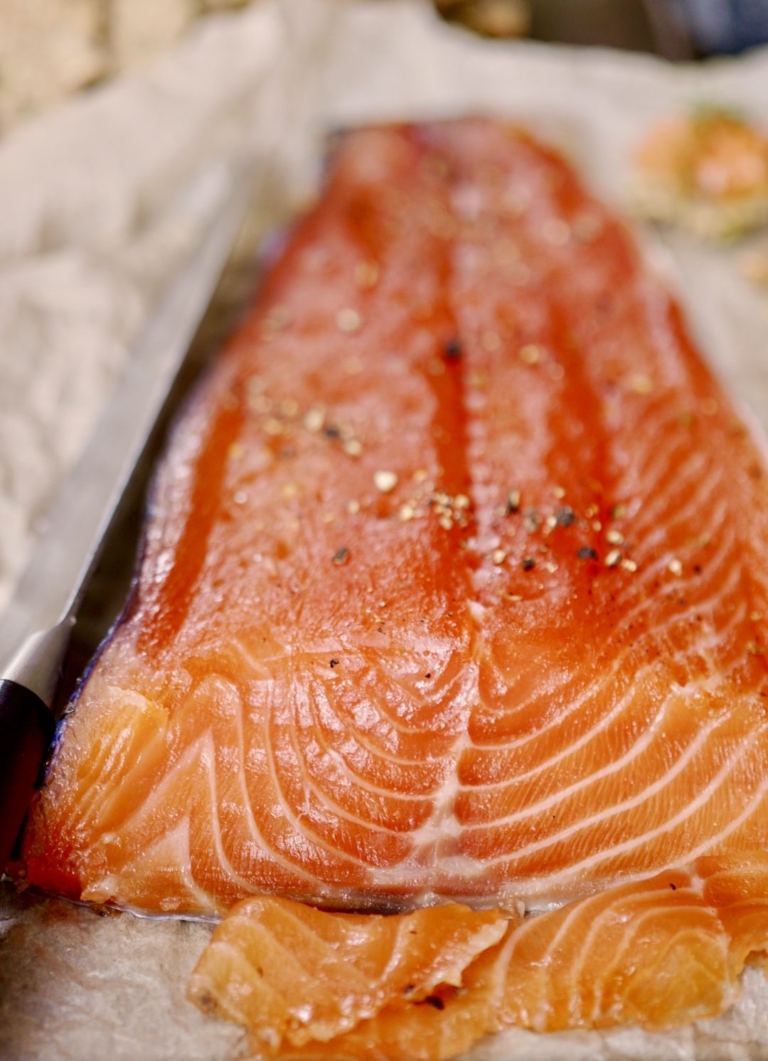
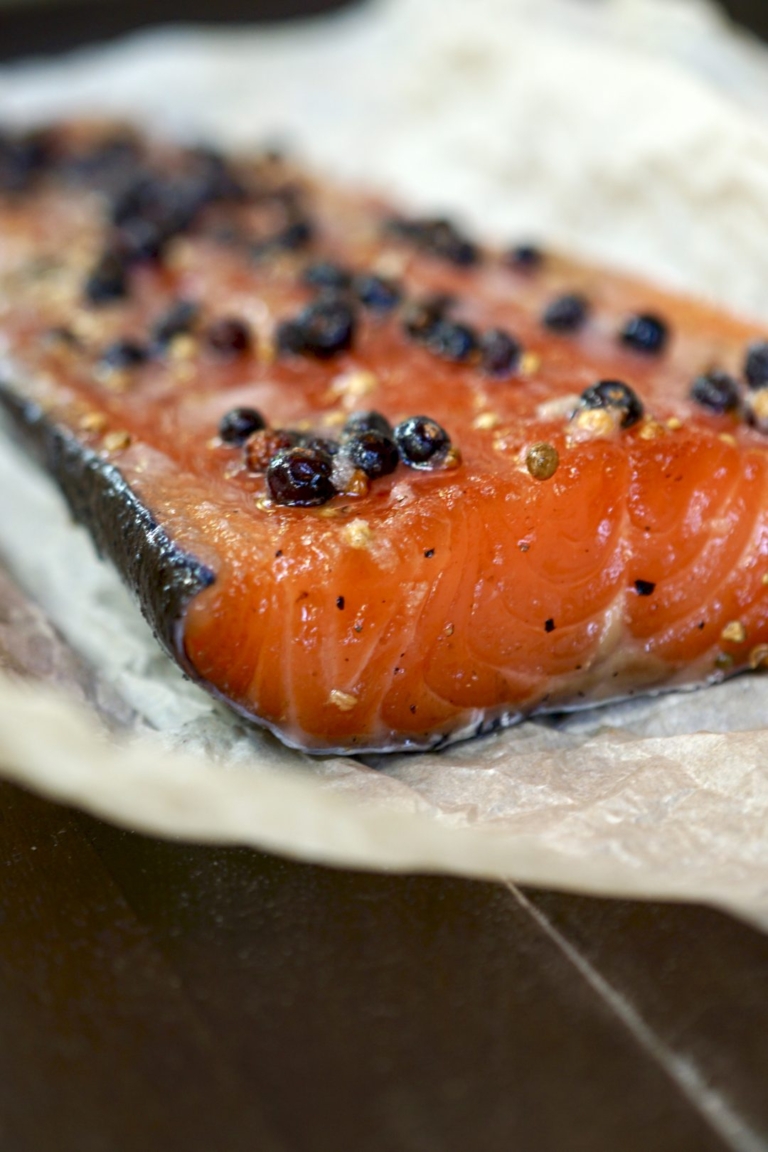


Other recipes mentions time from 12h to 48h. What effects 72h cure has?
Hi there. Thanks so much for reaching out. Great question. The curing time across the internet varies from 12 hours to about 7 days. There are many ways to cure salmon and all are acceptable ways of doing it. The length of curing time can be thought of as light, medium, and hard cure times depending on the desired result, as well as the size and thickness of the fish itself. A light cure yields a softer salmon with a more mild flavor. A hard cure on the other hand creates a firmer, more flavorful salmon. There are many ways to cure salmon, it really just depends on what your preferences are. Ultimately, cured salmon is a wonderful dish no matter how you cure it.
It looks yummy i will try this recipe at home
Thank you so much for the lovely compliment. This is a great recipe, I just keep on making it, it never gets old. Happy cooking and stay healthy out there!